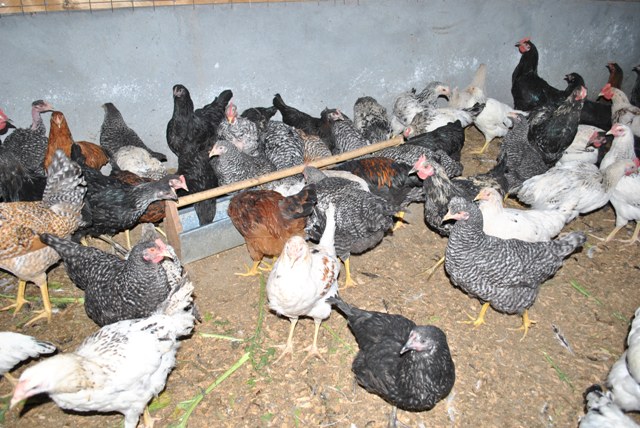
Feeding chicken on locally mixed feeds is helping farmers save the cost of poultry production which is about 70 per cent in Kenya. Photo courtesy.
One poultry farmer is saving about nine shillings per kilo on commercial feed by mixing course maize flour with omena residue, a process which he says is reducing the cost of production while increasing the profits margins.
Meshack Mogaka, who rears chicken upon orders from customers, said the local mixing has saved him from incurring extra costs in commercial feeds to get same results as for more than two years. Before, he was using feed bought from the shop.
“Business is about making profits after satisfying the customer. From every six kilos of the locally made feeds, I save about Sh50. The amount makes sense when dealing with large quantities of feeds and high numbers of chicken,” he said.
RELATED ARTICLE: Poultry farmers court alternatives to fight rising feed prices
Mogaka buys low-grade maize from farmers, at between Sh20 and Sh25 per a two-kilogramme tin. The tin is ground into coarse flour at Sh15. The total expenditure amounts to Sh40 for the two kilos.
For every six kilogrammes of grade three maize flour, he adds one kilogramme of the red omena residue, which he said is richer in proteins and other nutrients than commercial feeds.
He spends Sh220 in processing the six kilos, whose commercial equivalent cost is Sh270.
RELATED ARTICLE: Manual chicken feed mixing machine cuts buying cost by 30-50 per cent
Gradual stopping commercial feeds
“Soon after hatching, I offer the chicks ordinary commercial chick mash until after five weeks before gradually introducing the local mix. By the start of the sixth week, they are on the local feed. It is done gradually to avoid feeding stress in the young birds,” he said.
Proteins are important in body building.
At the same time, the digestive system of the broilers, kinyeji, Kenbrow, or indigenous chicks at six weeks can handle the feed.
Because his main target is meat, the farmer gives the poultry the feeds until maturity. In ensuring the birds get extra minerals that may not be in the greens and the local mix, he allows them to move around the homestead in the afternoons as he watches.
RELATED ARTICLE: Varsity scientists researching on insect based poultry feeds to curb rising production costs
As a strategy of reducing operational costs, Mogaka maintains low stocks when he has no orders to deliver. At the moment, he has five improved kinyeji, 10 Kenbrows and 10 broilers.
The broilers are 10 after he recently sold 40 of them at Sh400 to Kisii hotels.
His Kenbrow cock was the champion in Kisii County Agricultural Society of Kenya, 2016 edition, after clocking six kilos at eight months. He said the cock is worth Sh2,500 while another six-month one, which was weighing five kilos could fetch Sh2,200.
















Comments powered by CComment